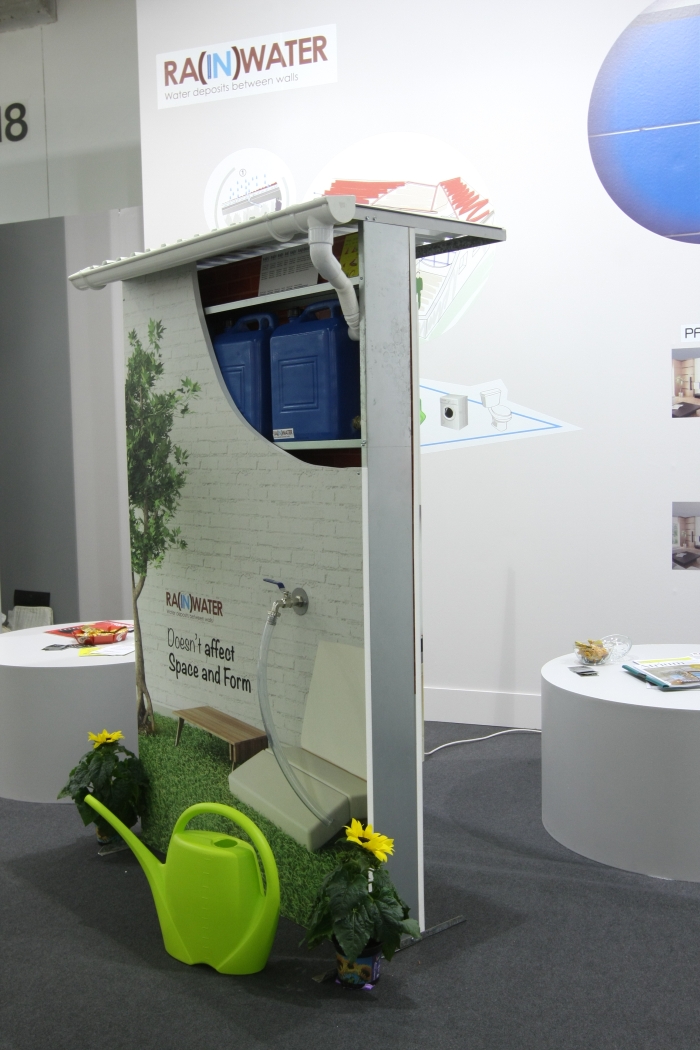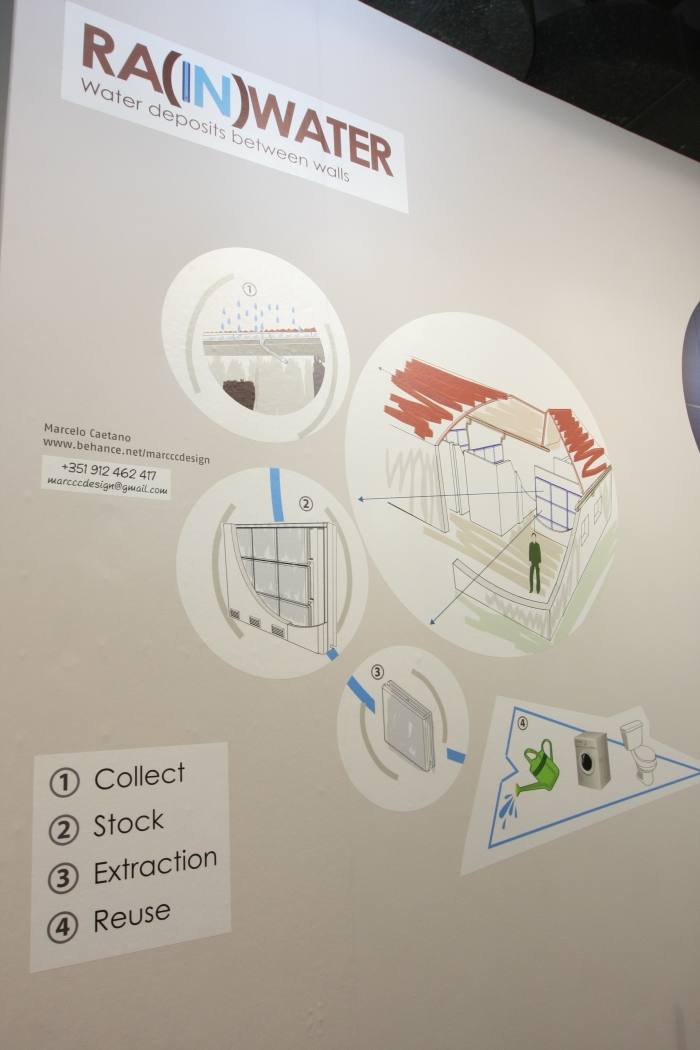The very first piece of product design George Nelson realised was inspired by architecture.
The typical American family home in 1944 had storage problems: not only because increasing prosperity meant that a majority of 1940s Americans owned more than their parents and grandparents had ever possessed, but changing lifestyle practices meant they didn't own the same things their parents and grandparents had owned.
Rather they owned things like golf clubs. Which don't fit in conventional cupboards.
Looking for a solution, and for all a solution which didn't take up too much extra floorspace, it dawned on George Nelson that walls are hollow, ergo, extend them by a couple of inches left and right and you can turn your wall into a cupboard with only a marginal loss of space.
The Storagewall was born!
Such or similar logic can be understood behind Ra(in)water by Portuguese designer Marcelo Caetano, a project currently on display as part of the Talents programme at Tendence Frankfurt 2015.
We all know that not only is water an expensive and rare resource, but that it will become ever more so.
And we all know that drinking water is far too expensive and rare a resource to use for flushing toilets, watering your plants, washing your car, keeping your clay moist while practising your pottery etc......
But where are we supposed to store all this non-drinking quality water required for such tasks?
In the walls.
At least according to Marcelo Caetano.
Featuring a network of plastic containers built into the interior walls of the house, Marcelo's Ra(in)water system foresees that rain water is transported from the roof rain gutters into the containers where it can be stored until needed. A feedback closes the system when the tanks are full and all further rain water is sent to the normal waste water system.
The beauty of the system is that the tanks are adapted to the standard thickness of a standard house wall and as such the system requires no extra space, just a little extra planning and a few extra bits of piping. And is universally applicable. Internal walls having long since given up their supporting function. In addition we suspect the system also brings insulation and sound-proofing benefits. Can't confirm that however.
Yes. We hear you! While the system is guaranteed to work perfectly well in a city such as Edinburgh where a regular supply of rain water is all but guaranteed, in somewhere such as Mexico City, or Lisbon, there is less rain. Notably less. Then what do you?
Use the "normal" water supplies.
There is no universal solution to our water crises: except universally understanding that the problem is not a lack of water availability but overuse of water, and that we all need to not only reduce our water consumption but find more sensible ways of using water.
Ra(in)water helps us on point two if not point one. Integrated into a house as a complimentary feature to the "conventional" water supply and disposal systems, even if in practice it is only available seasonally or over short term, irregular periods, during those times that it is in use it reduces the water footprint of every household.
And every little helps. Until we finally all help by only using a little.
At the moment Marcelo Caetano is in the process of applying for a patent and is looking for partners to help develop aspects of the system, and then comes the tricky phase of trying to win over architects and builders. We'll be sure and keep you updated on how Ra(in)water develops.
Further details on Marcelo Caetano, but sadly not Ra(in)water, can be found at www.behance.net/marcccdesign

